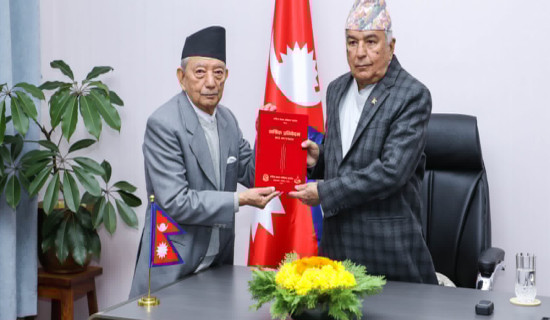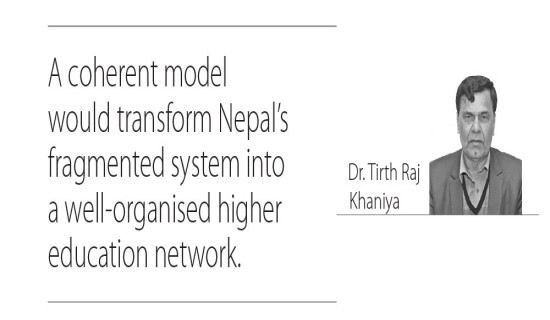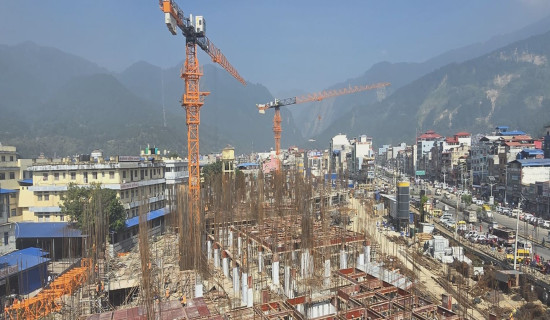- Sunday, 7 December 2025
Women As Leaders, Not Just Participants
In this advanced digital world, technology has transformed every aspect of our lives, including industries, economies, and societies. New technologies and their changes have become a part of our lives. But have we ever thought about who gets to lead and benefit from this transformation? Unless intentionally considered, it’s most likely not women. The reason is that, like other sectors, this sector even has underrepresented women. According to the World Economic Forum, women comprise only 28 per cent of the global workforce in Science, Technology, Engineering, and Mathematics (STEM). Given the critical role of STEM in addressing global challenges, a lack of diverse perspectives has led to strategies that fail to account for the needs and experiences of half the population.
In Nepal, the digital economy is advancing, but we are missing out on women at the forefront. A report by Women in Information Technology mentions only 0.5 per cent of women employees utilise Information and Communication Technology, and they hold just 7.88 per cent of core technical roles within tech companies. Even in the financial sector, while the number of new women business owners and sole women proprietors in Nepal doubled between 2014-18, most of this growth occurred in non-digital sectors (World Bank, South Asia's Digital Opportunity 2022). These data state the exclusion of women from the digital sector, which isn’t just a gender issue—it’s an economic loss.
Powerful opportunity
If women are fully included, the digital revolution presents a powerful opportunity to drive economic growth and innovation in Nepal. It presents vast opportunities for women’s economic empowerment, enabling greater market access, financial inclusion, and skill development to cater to niche consumer needs while maintaining a work-life balance. Digital financial services, mobile banking, and online payment opportunities can enhance financial autonomy, ensuring secure transactions and access to microfinance for business growth. With 80 per cent of women working in agriculture, access to technology can play a significant role in reducing women's drudgery and contributing to adapting to the changing climate while at the same time increasing productivity and efficiency.
To utilise these opportunities, several barriers, such as the digital literacy gap, limited access and technical education, workplace discrimination, and difficulties in balancing work and family responsibilities, need to be addressed. Harmful gender norms continue to dictate women's access to technology and discourage women from exploring digital spaces. Many women lack decision-making power over financial and digital resources, reinforcing their economic dependency. Also, the rapid expansion of Artificial Intelligence (AI) worldwide further complicates this divide, with the systems trained on biased data risk amplifying gender stereotypes. For example, globally, hiring algorithms have been shown to favour men over women for STEM jobs, reflecting historical biases in the workforce.
As Nepal moves toward Least Developed Country graduation, bridging this digital gender gap becomes even more critical. In this context, ensuring women’s representation in the digital sector is not just necessary—it is essential for inclusive progress. If we don’t act now, the digital gender divide will not only persist but deepen, becoming the next great barrier to Nepal’s progress.
The principal course of action is to press for policy changes such as expanding infrastructure, making devices more affordable, and investing in digital education tailored for women and girls. These should be complemented by awareness campaigns and community-driven initiatives to challenge cultural constraints. It’s essential to prioritise inclusive digital policies that ensure women are not left behind in the transition to a tech-driven economy.
There have been some efforts by the Government of Nepal (GoN) with growing concerns about data privacy, ethical risks, and gender-based biasedness in AI. The draft of the first National Artificial Intelligence (AI) Policy released last February 4 is undergoing public consultation where we need to also emphasise a gendered approach and ensure that gender equity is a core consideration.
High-impact initiatives
Besides, the collaboration between the GoN and stakeholders or agencies like UN Women, which has prioritised increasing women's access and participation in the digital space, is highly important. This will also align with Nepal’s commitments under the Beijing Declaration and Platform for Action (BPfA), a landmark global agenda for gender equality that the government has pledged to uphold. To accelerate progress, UN Women is mobilising high-impact initiatives globally under the theme ‘2025: The Year For ALL Women and Girls.’ In this spirit, International Women’s Day 2025 is being commemorated under the theme, ‘For ALL Women and Girls: Rights. Equality. Empowerment.’ Such collaborations can further strengthen the advocacy for gender-responsive policies and frameworks closing the digital gender gap, which is a prerequisite for Nepal’s national and international gender equality and economic development goals.
Furthermore, collaboration with private sector can play a crucial role in fostering inclusivity by supporting women-led tech startups and ensuring gender diversity in AI development. Civil society can drive meaningful change through awareness campaigns on digital literacy and advocacy for equal internet access. At an individual level, if women and girls are supported in exploring digital opportunities, this can help break societal norms. By taking collective action, we can ensure that women are not just participants but leaders in shaping the future of technology.
With this, Nepal can unlock the full economic potential of women as innovators, entrepreneurs, and leaders in the digital age and can march forward for digital inclusion of all women and girls in Nepal.
(The author is the Country Representative for UN Women Nepal.)















